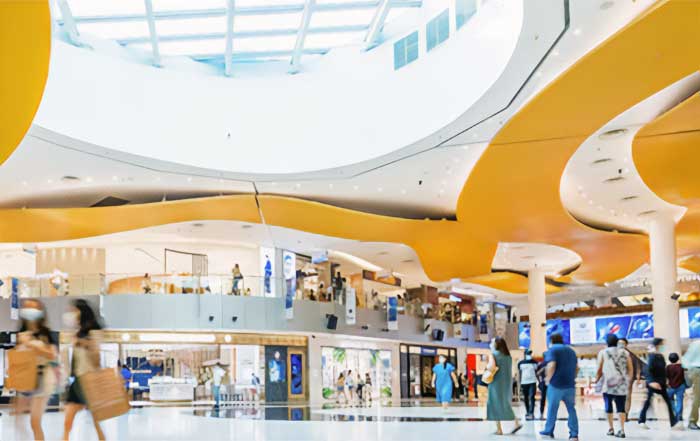Singapore is a bustling city with a thriving shopping scene. The city has something to offer; from luxury malls to street markets. With so much to choose from, it can take time to pick the best shopping malls in Singapore. Further, Singapore is known for its extravagant shopping malls, where luxury items are a common sight. Singaporean malls have everything from designer bags and watches to jewellery and couture clothing. Whether you want a unique gift for a loved one or want to indulge in a bit of luxury for yourself, Singaporean malls are sure to have something for you.
Shopping in Singapore’s malls is an experience like no other. From luxurious designer items to exquisite couture clothing, there's something for everyone. Consider these top malls:
Vivo City: VivoCity is among the largest shopping malls in Singapore. The mall is located in the heart of Sentosa Island and is connected to the Sentosa cable car station. It has a wide range of shops, including fashion, art, electronics and more. VivoCity has a fantastic food court and a range of entertainment options, such as a movie theatre and an arcade. VivoCity is located in the heart of HarbourFront, VivoCity; the mall is split into two levels. It has over 300 stores offering a wide range of products, from fashion and beauty to electronics, home appliances, and more. It has a large food court featuring local and international cuisine, a cinema, an outdoor amphitheatre, and a range of entertainment options.
Marina Bay Sands: This is one of Singapore's most iconic landmarks. This shopping mall is situated at the top of the Marina Bay Sands Hotel & Casino. It offers a luxurious shopping experience with international brands such as Chanel, Louis Vuitton, Dolce & Gabbana, and more. The mall has a wide range of restaurants, from high-end to casual dining. Marina Bay Sands luxury shopping mall is located in Singapore's central business district. It has some of the world's most luxurious designer stores and a range of high-end restaurants and cafes. And there's ION Orchard: ION Orchard is among Singapore's most popular shopping destinations. It is home to the world's leading luxury brands, including Burberry, Gucci, Prada and more.
Takashimaya: Takashimaya is one of Singapore’s oldest and best-known shopping malls. This mall has a wide range of international and local brands, including fashion, beauty, electronics and more. It has a food court and a range of entertainment options, including a movie theatre and an arcade. Bugis Junction is another top shopping mall: Bugis Junction is a popular shopping destination in Singapore. This mall is located in the heart of Bugis Street and features a wide range of international and local brands. It has a wide range of food outlets, as well as an arcade. Bugis Junction is located in the Bugis area of Singapore; the shopping centre has over 300 stores. It offers a variety of fashion, beauty, and electronic stores, as well as a range of restaurants, cafes, and entertainment spots.
Orchard Road: This is Singapore's premier shopping district. Located in the heart of the city, Orchard Road is filled with high-end designer boutiques, international fashion stores, and a variety of other shops. There's also a range of restaurants and cafes, as well as entertainment venues like cinemas and theatres. Another is Clarke Quay: Clarke Quay is a popular spot for locals and visitors alike. It’s home to a range of restaurants, cafes, bars, and entertainment venues. It has a few stores offering fashion, beauty, and electronic goods.
Undoubtedly, Singapore is a shopper's paradise. With its bustling streets, various stores, and a wide variety of goods and services, it's no surprise that Singapore's shopping malls are some of the best in the world. From luxury outlets to budget-friendly stores, Singapore’s shopping malls offer a wide range of stores catering to different budgets and tastes. What can you buy in these shopping malls?
Designer Bags: Designer bags are one of the most popular luxury items in Singaporean malls. From Gucci, Prada, LV, and Coach, the list of designer bags available in Singapore is seemingly endless. If you want a timeless classic or something more modern, you'll find it in Singapore's malls. You can also buy designer watches: The perfect accessory for any outfit, designer watches are a must-have luxury item. From Tag Heuer and Omega to Patek Philippe and Cartier, you'll find a selection of watches to make your outfit complete. Whether you want something classic and timeless, or something with a bit more of a modern edge, you'll find it at one of Singapore's malls.




